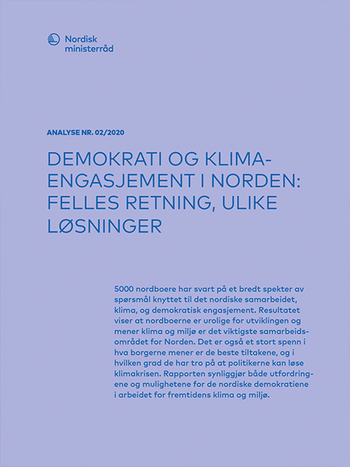The potential of industrial symbiosis as a key driver of green growth in Nordic regions

Informasjon
Utgivelsesdato
Beskrivelse
This study shows that there are differences in approaches to industrial symbiosis in the Nordic countries. In Finland and Denmark, there is generally a strong top-down approach to industrial symbiosis, accompaniedby a clear vision and comprehensive strategies for a CE/industrial symbiosis at the national and regional levels. Industrial symbiosis exchanges have been actively facilitated by municipal and regional actors and networks in combination with key private companies. In Iceland, Sweden and Norway, industrial symbiosis initiatives are often characterized by a bottom-up approach, where private companies and business parks are driving the development, while industrial symbiosis is largely missing from the national-level policy agenda. In the Icelandic and Swedish regional case studies, there are no local policy instruments that directly support industrial symbiosis or a CE, and industrial symbiosis activities are not explicitly a part of regional and municipal development strategies. In order to utilize the full dynamic and regional potential of industrial symbiosis in these regions, there is a need to develop coherent policies and support schemes for industrial symbiosis activities to fill this gap. According to the study, a key motivation for companies to engage in industrial symbiosis activities has been the desire to increase profitability and competitiveness. Business opportunities are the major driving force behind the development of industrial symbiosis. Among the main hindrances to industrial symbiosis development identified in the regional case studies has been companies’ lack of time and resources to implement new business models such as industrial symbiosis, as well as a lack of industrial symbiosis expertise in the region and low awareness about the opportunities provided by industrial symbiosis. In this regard, the presence of a cluster, network or other co-ordinating body that can facilitate collaboration helps to organize exchanges across companies. Disseminating information about industrial symbiosis solutions has played an important role in the Danish, Finnish and Norwegian cases. Overall, the regional cases showed similarities and differences with regard to the organization of industrial symbiosis networks, the type of support instruments in place to stimulate industrial symbiosis activities, adoption of the term industrial symbiosis and the potential for economic growth. Regarding the potential for new businesses and jobs to arise from industrial symbiosis activities in Nordic regions, exact numbers or quantitative estimates are difficult to obtain. It can be stated, however, that there is significant future potential to expand industrial symbiosis activities and develop new industrial symbiosis-related businesses in Nordic regions.
Publikasjonsnummer
2015:1
Organisasjon




